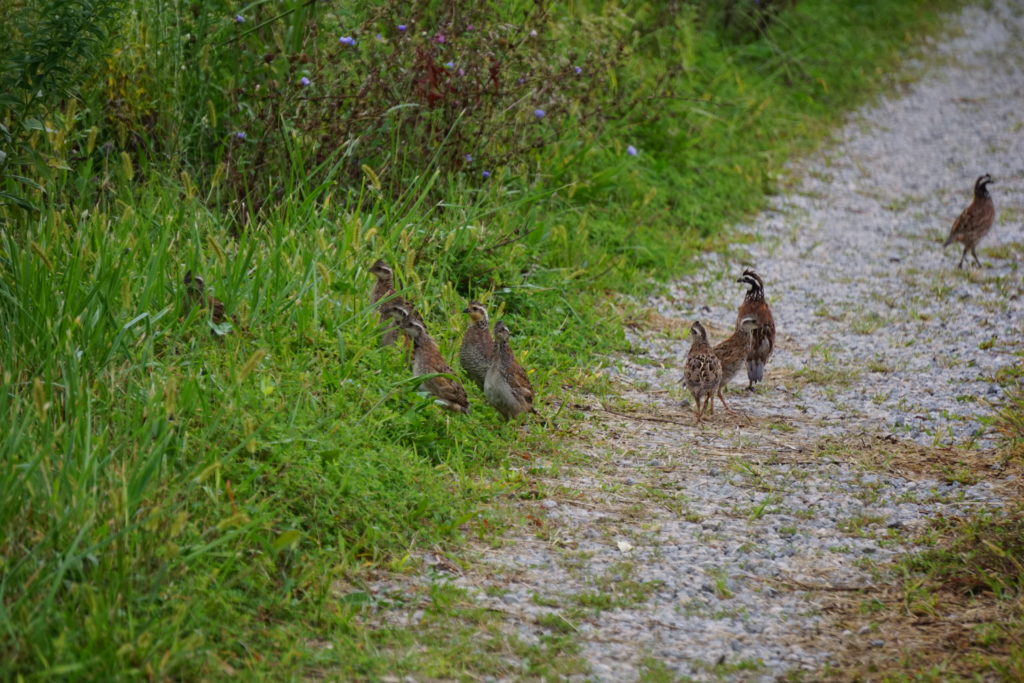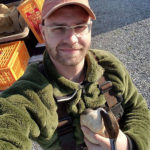In 2018, then-NBCI Communications Director John Doty, penned an article “Sometimes, People Can’t See the Forest for the Trees. In Delaware, You Can’t Hear the Turkeys for the Bobwhites.” In the article, he conveyed some of the many successes we have had with Northern Bobwhite quail on our Focal Area (Cedar Swamp Wildlife Area) to the “detriment” of our deer and turkey hunters. Since then, our habitat work has allowed the population to continue to grow and expand, now reaching levels where quail are regularly observed on neighboring landowners’ properties. In the spring, I often get calls from these landowners excitedly telling me about hearing the bobwhite whistle again. Many tell me it brings back fond memories of their childhood—hearing, seeing, and hunting on these same properties. If you weren’t aware, in the 1960s Delaware had more quail per square mile than any other place in the country, according to the Breeding Bird Survey.
I use this opportunity to try and change their perception of current land management in Delaware by explaining the benefits of early successional habitats from a species and economic perspective. However, similar to elsewhere in the country, Delaware fields are farmed from ditch to ditch without a hedgerow or buffer in sight. Add to that the extra monetary incentive to grow row crops for poultry production, and one can see why early successional habitat practices are not popular or economical on private lands in the most poultry-dense region of the world. However, with a bit of persistence and the increasing presence of quail on the landscape, some of these landowners have taken these ideas to heart and begun modifying marginal production grounds.
As spring transitions to summer, I get calls as land managers begin spraying, mowing, and preparing hunting spots. This time, it’s not about singing males but seeing young. One such story sticks in my mind; a landowner called telling me his son told his dad to “STOP the tractor!” Dumbfounded, his father asked why, as they had lots of mowing to do that day. From the son’s point of view in the passenger seat, he describes the ground looking like “popcorn” as baby quail erupt from grass in front of the implement. Seeing tangible evidence of singing males successfully reproducing further transforms their resolve to change practices or modify habitats for this species. These interactions are typically followed by countless questions about how to keep the population growing and what they can do to help. Quail alone are not likely going to be the mechanism for getting these landowners to change their ways. The most effective way I have found to change perspectives is to explain the benefits that early successional habitats have during this time for another once-extinct upland gamebird for the state, the Wild Turkey. Turkeys are now abundant and a treasured game species throughout the state. I explain by modifying the habitat, both species and many others benefit.

Lastly, as I interact with hunters through the fall and winter, the topic of flushing coveys has increased during my tenure here as gamebird biologist. Some private landowners adjacent to our focus area describe having as many as five coveys. What started off as the pleasure of hearing bobwhite males whistling has turned into year-round intensive management for these landowners. This would not have been possible without the NBCI Coordinated Implementation Program and the efforts of the Delaware Division of Fish and Wildlife to preserve, protect, and grow the quail population on our focus area through intensive monitoring and habitat manipulations.

Justyn Foth
Waterfowl, Turkey, and Upland Game Bird Program Leader
Delaware Division of Fish and Wildlife


